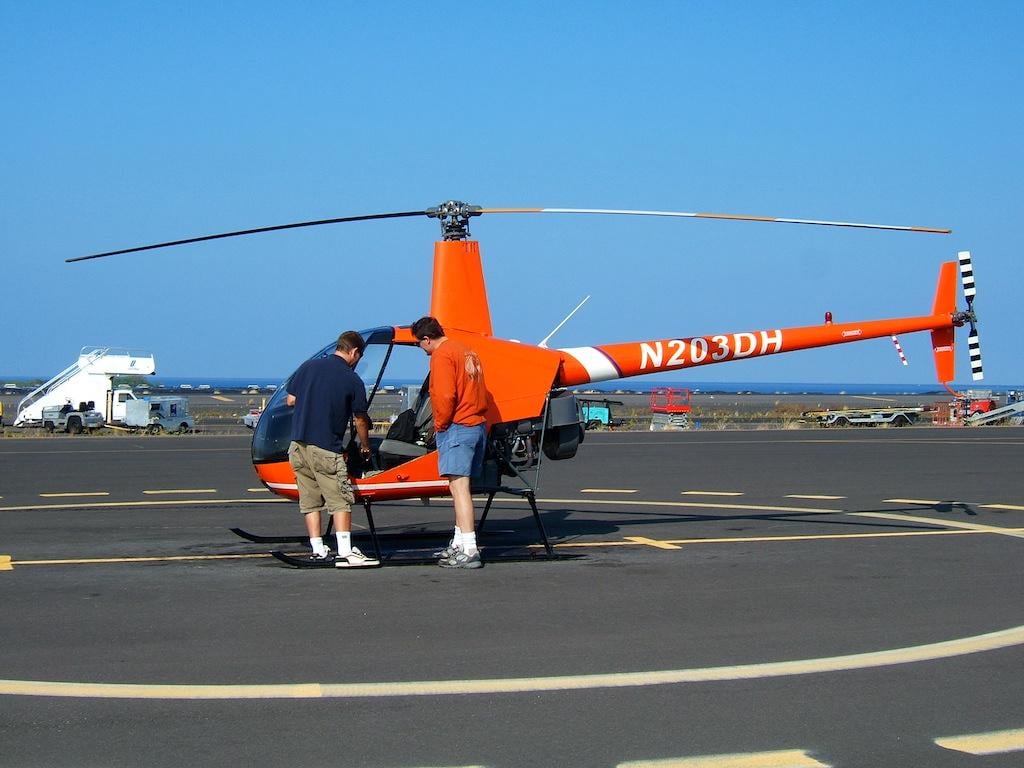Windscreen Distortions Can Affect Pilots’ Perception, Part 3

Photo illustrates the complex curve in the windscreen of an R-22. Robinson designed an optional windshield made from polycarbonate and tested to resist a 2.2 lb. bird strike at 90 kts.
Among other distortions that can affect windscreens is halation. Halation is the scattering of light by the windscreen, and is often referred to as glare, haze, or scattering. It is most significant when flying into the sun and can be caused by particles within the transparency, fine scratches, or dust and dirt on the surface.
Halation reduces the contrast of objects viewed through the windscreen. These conditions impair the pilot’s ability to accurately determine depth, altitude, and topographical features, thus creating an inability to distinguish distances and closure rates. In general, any phenomena that creates the impression of being farther away from the runway such as light rain, haze, mist, smoke, dust, or glare creates the illusion of being too high and thus induces a tendency to shallow the glide path.
Multiple images are caused by light rays reflecting off the inner and outer surfaces of the windscreen, particularly at night. An example is a duplicate set of runway centerline lights that appear parallel, leaving the pilot uncertain which set of centerline lights is truly accurate. These secondary images can give pilots false motion cues, to include an inaccurate perception of the approach velocity or rate of descent during a night landing.
Reflections bouncing off the windscreen from glare shield, pilot clothing, or instrument lights, can interfere with the pilot’s out-of-cockpit vision. This is most significant at night or in bright sunlight. Reflections reduce the contrast of out-of-cockpit objects and may even obscure objects.
Windscreen design can induce distortions. Due to the differing orientation angles of two adjacent window panels, there can be an optical discontinuity. When a taxiway is viewed through two windows it can appear to be broken or bent. If the vision of an eye is obstructed by a windshield post, then a visual target (such as conflicting air traffic) could be in the blind spot of the other eye and remain undetected.
Proper Cleaning And Maintenance
The eyes tend to focus at a distance just under 3 ft. rather than infinity during high-altitude cruise when the eyes have no definitive object to focus on. This effect is called Empty Field Myopia and lessens the detection of conflicting traffic. A dirty windscreen aggravates this tendency. This heightens the importance of keeping a windscreen clean of dust, scratches, delamination and reflections.
Part of assuring the optical quality of a windscreen is proper cleaning, attentive pre-flighting, and if damaged, repair or replacement if the damage exceeds specified limits. Unfortunately, sections of the aircraft manual describing the proper care of the windscreen are usually buried in an obscure place that doesn’t receive much attention in ground school training.
The Falcon 20 maintenance manual warns owners that repairs of plexiglass surfaces suffering from superficial scratches, cracks and crazing should be performed with great care and successful results will depend on the skill of the maintenance technician.”
The Hawker 800 Maintenance Manual (56-20-11) advises: “To avoid further deterioration which could lead to panel replacement, it is recommended that all scoring, crazing, etc., should be rectified in according with the SRM (Structural Repair Manual) as soon as possible.”
The choice of cleaning cloth is equally important. The Lear 28/29 Maintenance Manual (56-00-00, Page 201) advises care to avoid scratches or gouges that may be caused by dirty or rough cleaning cloths or grit carried in the water.
Cheesecloth, very soft paper towels, chamois and 100% cotton flannel are generally recommended. Rubbing the plastic with a dry cloth will cause scratches and build up an electro-static charge that attracts dust particles. All rubbing on acrylic plastics shall be done with as light a pressure as possible. Friction created by buffing or polishing too long in one spot can generate sufficient heat to soften the surface which will produce a visual distortion.
There are many safety, economic and other reasons why aircraft operators should give their windscreens some extra TLC. As the preceeding examples illustrate, an aircraft operator who follows the aircraft operating and maintenance recommendations is more likely to maintain high optical qualities of their windscreen for an extended period of time.
Windscreen Distortions Can Affect Pilots’ Perception, Part 1: https://aviationweek.com/business-aviation/aircraft-propulsion/windscre…
Windscreen Distortions Can Affect Pilots’ Perception, Part 2: https://aviationweek.com/business-aviation/aircraft-propulsion/windscre…





